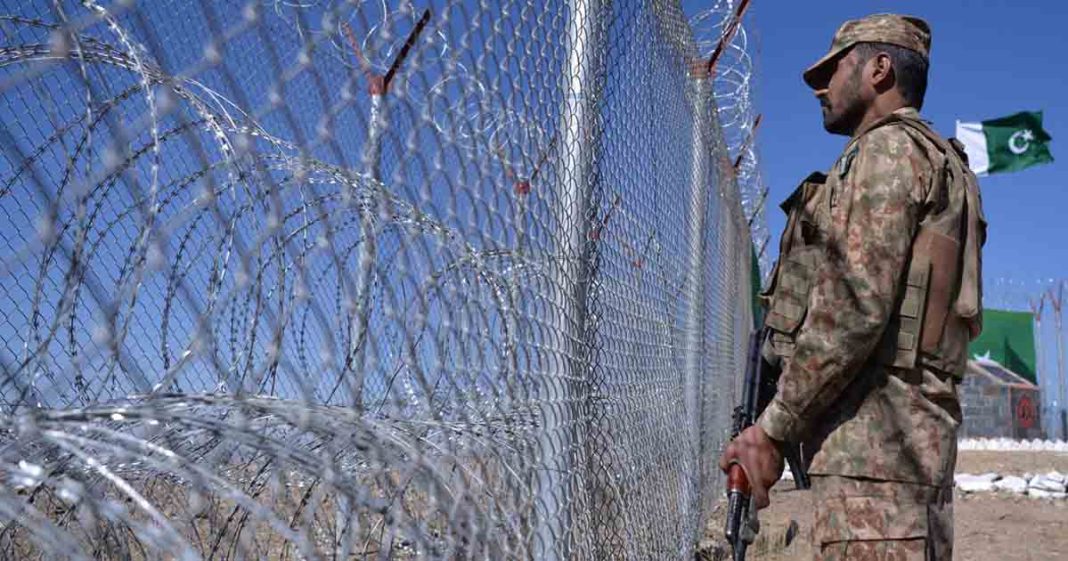Since the US withdrawal from Afghanistan, TTP attacks against Pakistan Army border check posts have increased. Almost every other day the Army is suffering casualties from these hit-and-run TTP attacks. There are regular incidents where the border fence erected by the Pakistan Army along the Pak-Afghan border is breached and dismantled by the TPP militants presently hiding in Afghanistan. Pakistan has experienced a spike in militant attacks, killing more than 450 people, mostly security forces, in the first nine months of the year 2022 alone. Only recently, a video clip became viral on social media, showing the Afghans easily dismantling a portion of the border fence and hauling it away.
Contrary to Pakistan’s expectations, the Afghan Taliban has given a strong impression during the last year or so that they are no different from their predecessors who had ruled Afghanistan since 1947. After the U.S. withdrawal, the Taliban appealed for recognition of their government. It was feared that they will fully show their true colors after getting official recognition from the world capitals.
Read more: Afghan women protest on eve of UN day against violence
Recognition or no recognition, this is happening now
The Taliban, during the U.S. occupation, had been using Pakistan as a conduit for getting much-needed logistics, military, and moral support. Pakistan’s border areas had become safe havens, not only for the Taliban but also for the TTP- a metamorphosis of the Afghan Taliban. Whenever beaten by the U.S-sponsored coalition forces, the Afghan insurgents of every denomination would sneak into these safe havens for rest and refitting. A pragmatic and sane lobby in the US, represented by the former National Security Advisor Henry Kissinger, has labeled the past Afghans and their Indian mentors as a “Cartel of Thugs”. And the Taliban are no exception.
For how long will Pakistan keep bleeding due to Afghan cross-border terrorism?
Pakistan’s weak response to the Afghan Taliban’s provocations has made them more arrogant. They think that having forced the Americans out of Afghanistan, they can now blackmail Pakistan into submission. They want to maintain a permanent presence in Pakistan’s erstwhile FATA through the TTP, including the re-establishment of TTP hideouts throughout the tribal areas. To be successful in their ambitions, they gave ganged up with like-minded religious groups like JUI to include the entire KPK within their sphere of influence. By dismantling the border fence, the Taliban intend to make the Pak-Afghan border porous again to facilitate free movement and smuggling up to the Karachi and Gwadar ports.
A never changing aim of all the Afghan governments, Taliban included, had been to force Pakistan to provide a land corridor for Afghan trade with India. In the future, the Taliban, in connivance with India, can also threaten Gilgit-Baltistan to keep Pakistan Army embroiled in this sensitive province. Despite the Afghan Taliban claiming to be completely separate from TTP, the Afghan Taliban allowed TTP to operate from Afghanistan to launch terrorist attacks on Pakistan. To this end, TTP coordinates the joint militant network with its Afghan counterparts.
Is passive defense an effective response to Taliban terrorism?
The Afghanistan–Pakistan border fence was built by Pakistan to prevent terrorism, arms, and drug trafficking, and to check the movement of refugees, illegal immigration, smuggling, and infiltration across the approximately 2,670 km long (1,660 mi) International border between Afghanistan and Pakistan. Work on the fence started in 2017. Barring some small pockets, the fencing has been completed.
The Pak- Afghan border has five official crossing points. There are over 400 forts, with cameras, watchtowers, and more than 800 drones assisting the barrier. Despite this much effort, the border fence and surveillance devices have failed to impede the TTP from freely crossing the border to launch attacks against Pakistan. Why is it so?
Read more: Taliban ban women from parks and funfairs in Afghan capital
The border fence, like any other obstacle, has zero obstacle value unless covered by fire. It is not possible to cover, by fire, the entire 2,670 km long border, nor is it possible to carry out complete surveillance of such a long border with cameras and drones. The entire concept of defending the border by erecting a fence, and constructing forts, watch towers, artillery gun emplacements, and tank ramps, is self-defeating. It is because the troops manning the border are like sitting ducks, at the mercy of the sneaking terrorist holding a WWII vintage bolt-action rifle (BTW they are now equipped with automatic weapons, rocket launchers, and satellite telephones also). The attacking terrorist enjoys the initiative while the defender can only respond.
So, what is the solution?
Cross-border terrorism cannot be defeated by the passive defense. It needs a proactive policy based on snuffing out the terrorist in his hideout. Such a policy will require declaring a security zone west of the so-called Durand Line. When organizing a defense out of contact with the enemy, the defender can establish a security zone in front of his defenses. This security zone can be up to 15 to 50 km deep.
So, Pakistan Army’s security zone across the Durand Line will be such a deep strip across the International border with Afghanistan. The security zone is quarantined for the enemy, which means that no Afghan movement will be allowed within the security zone without Pakistan Army’s permission. The security zone will be covered by small arms and artillery fire. A tall order? This is the price we will have to pay if we want to stop bleeding due to terrorism. It has political implications though.
Saleem Akhtar Malik is a Pakistan Army veteran who writes on national and international affairs, defense, military history, and military technology. He Tweets at @saleemakhtar53. The views expressed in this article are the author’s own and do not necessarily reflect the editorial policy of Global Village Space.














